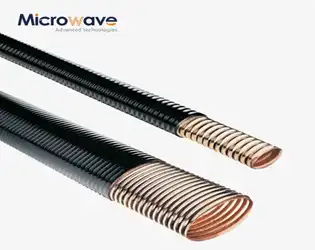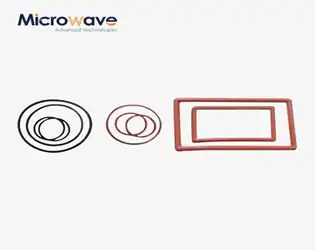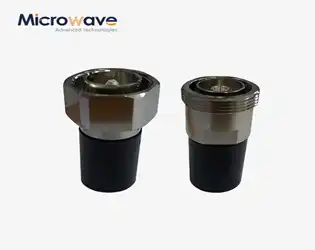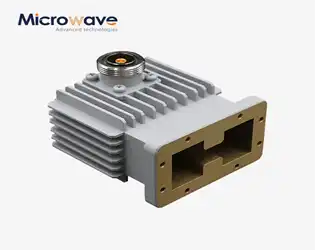BLOG

Elliptical Waveguide vs Rectangular: Which Is Better?
December 9, 2025
When designing high-frequency microwave systems for satellite communications, radar installations, or defense applications, engineers face a critical decision that can impact system performance, installation costs, and long-term reliability. Choosing between an Elliptical Waveguide and rectangular waveguide isn't just about technical specifications—it's about finding the optimal solution that balances efficiency, flexibility, installation complexity, and budget constraints. This comprehensive analysis examines both waveguide types from multiple perspectives to help you make an informed decision for your specific application requirements.
How to Choose a Waveguide Flange Gasket for High Power Use?
December 8, 2025
When operating high-power microwave systems, selecting the wrong Waveguide Flange Gasket can lead to catastrophic signal leakage, arcing damage, and complete system failure during critical operations. Imagine discovering poor signal integrity during a crucial satellite transmission or experiencing equipment breakdown during a defense radar mission—these scenarios demand precise gasket selection from the start. This comprehensive guide addresses the critical factors engineers and technicians must consider when choosing Waveguide Flange Gasket solutions for demanding high-power applications across telecommunications, aerospace, defense, and navigation industries.
Are Plastic Flange Caps Safe for Long-Term Outdoor Use?
December 8, 2025
Picture this: you've invested thousands in precision waveguide components for your satellite communication system, carefully stored them outdoors during a project delay, only to discover months later that moisture has penetrated the flanges, causing corrosion that renders them unusable. This nightmare scenario haunts engineers across telecommunications, aerospace, and defense industries. The answer to whether Plastic Flange Caps can prevent such disasters during extended outdoor exposure depends critically on material quality, design engineering, and environmental conditions. High-density polyethylene Plastic Flange Caps, when properly specified and installed, provide reliable protection for waveguide flanges, coaxial assemblies, and antenna components even under challenging outdoor conditions, but only if you understand their capabilities and limitations.
Coaxial Directional Coupler Maintenance Checklist for OEMs
December 8, 2025
System failures in satellite communications or radar networks often trace back to one overlooked component: the Coaxial Directional Coupler. When these precision devices degrade unnoticed, OEMs face costly downtime, signal degradation, and customer complaints. This comprehensive maintenance checklist empowers OEMs to implement proactive strategies that extend component lifespan, maintain peak performance specifications, and prevent catastrophic failures in mission-critical RF systems across aerospace, defense, and telecommunications applications.
What Is a Coaxial Load and Why Does Your RF System Need One?
December 5, 2025
Have you ever experienced equipment damage from reflected RF power or inconsistent test results in your microwave system? A coaxial load is a critical termination device designed to absorb radio frequency energy without reflection, protecting your sensitive components from power surges and ensuring accurate system performance across frequencies from DC to 110 GHz.
Waveguide Electromechanical Switch: Cost, Lead Time, and OEM Options
December 5, 2025
Are you facing project delays because your current supplier can't deliver waveguide electromechanical switches on time? Many procurement managers and RF engineers struggle with unpredictable lead times, hidden costs, and inflexible customization options when sourcing critical microwave components. Understanding the true cost structure, realistic delivery timelines, and available OEM partnerships for waveguide electromechanical switches can mean the difference between project success and costly setbacks. This comprehensive guide addresses these pain points while revealing how strategic sourcing decisions impact your satellite communications, defense systems, and aerospace applications.
How Does RF Contact & Choke Design Influence Waveguide Single Channel Rotary Joint Performance?
December 5, 2025
When radar systems fail during critical operations or satellite communications experience signal degradation mid-transmission, the culprit often lies in poorly designed RF contacts and choke structures within the Waveguide Single Channel Rotary Joint. These precision-engineered components serve as the critical bridge between stationary and rotating waveguide sections, and their design directly determines whether your system maintains signal integrity or suffers from devastating power losses, electromagnetic leakage, and premature component failure. Understanding the intricate relationship between RF contact mechanisms and choke designs is essential for engineers seeking to optimize performance in satellite communications, defense radar systems, aerospace applications, and navigation equipment where reliability is non-negotiable.
Why Choose a High Power Waveguide to Coaxial Adapter?
December 4, 2025
In high-frequency RF systems, signal degradation and power loss can cripple your entire operation. Picture this: your satellite ground station suddenly experiences a 4dB drop in received signal strength, or your radar system fails to detect critical targets because of excessive transmission loss. These scenarios are not hypothetical—they happen when system designers underestimate the importance of proper signal conversion. A High Power Waveguide to Coaxial Adapter solves this critical challenge by providing a reliable, efficient interface between waveguide systems and coaxial transmission lines, ensuring minimal signal loss while handling substantial power levels in demanding applications.




